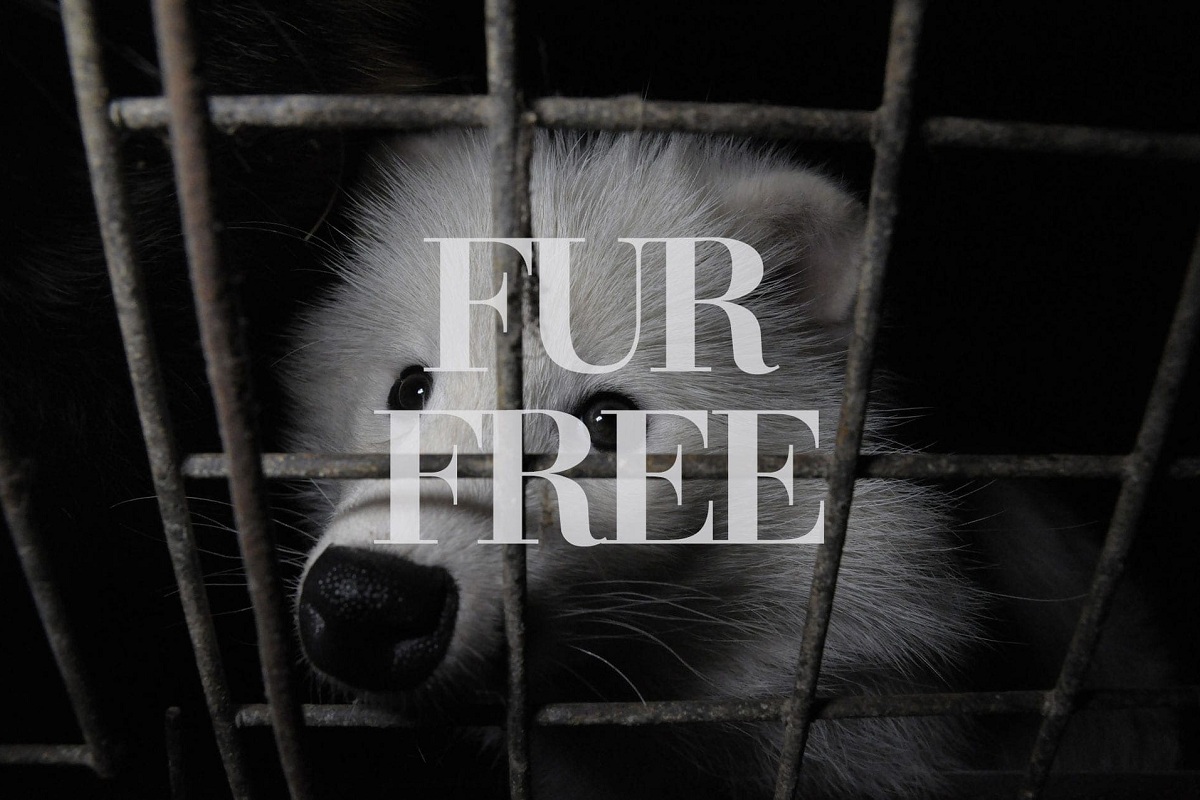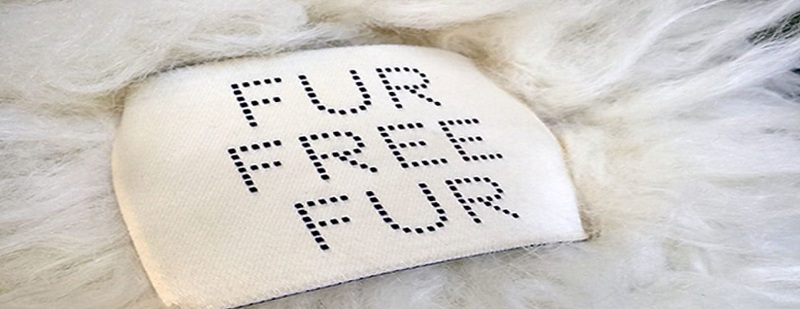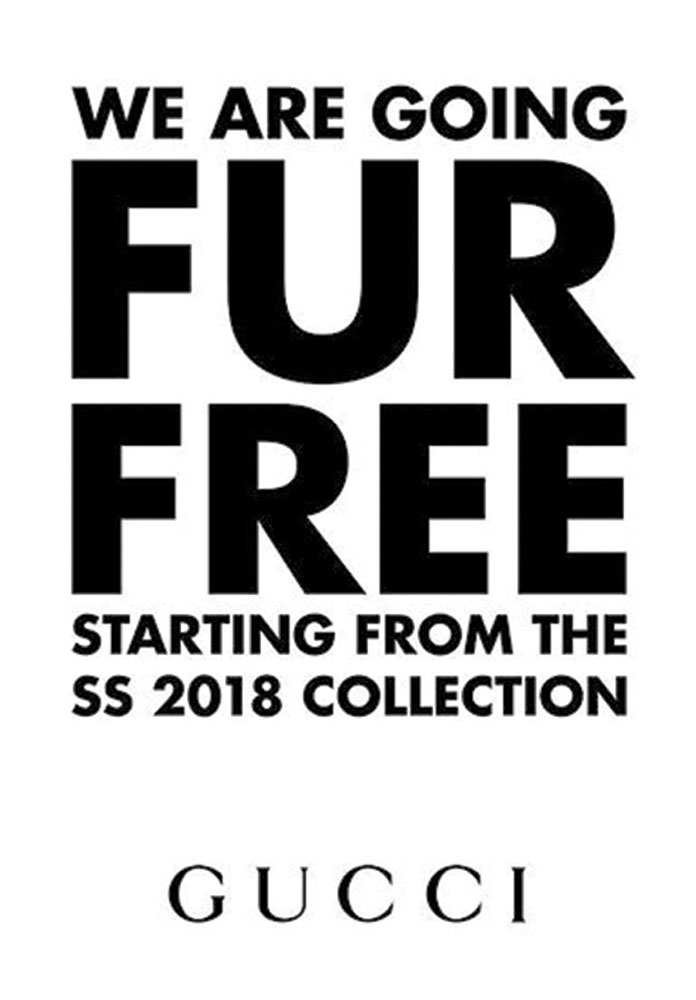
Fur Free Generation
Fur Free. Most in-market furs that are being sold globally are from farmed animals like mink, foxes, racoon dogs, rabbits and chinchillas.
Each year, more than 100 million animals worldwide are being killed on the fur farms after their short and miserable lives in the small wire meshed battery cages. People killed them just only for its fur to bolster fashion industries.
By keeping wild predators in small cages, the consequences result in numerous serious stresses. Those stresses are related to their health problems and disorders such as infected wounds, missing limbs, cannibalism, and stereotypical behaviours. The stress of the caging conditions and their fear of humans will eventually induce numerous physical and behavioural abnormalities.
For gathering the animal pelts on fur farms, they kill the animals by countless cruel methods like gassing, neck-breaking, anal electrocution and sometimes skinning alive. These methods are barbaric; just only to use a part of an animal for embellishing human appearance.
You can learn more about fur farming by international coalition at Furfreealliance.com here.
Fur Ban Begins
Fur ban has been introduced in many countries around the world in recent years. The initiative aims to prohibit the farming of some or all aminal species for furs. Legislation to ban or phase out fur farming has adopted in the UK and Northern Ireland (2000), Austria (2004), Croatia (2006), Bosnia and Herzegovina (2009), The Netherlands (2023), Slovenia (2013), Republic of Macedonia (2014), Czech Republic (2019), Norway (2025 and Belgium (2019).
In these countries, animal welfare concerns have been given priority over the fur industry’s interests. Furthermore, the countries such as Switzerland, Germany, Italy, Denmark and Sweden have adopted stricter regulations regarding the phasing out of all animal breeding for fur or the breeding of certain species such as foxes.
Nowadays, many brands, retailer and magazine around the world have announced to go fur free.
The following is the latest and hottest viral in the fashion industries by going fur free for standing up against the animal welfare issues.
For the past October, Gucci President and CEO, Marco Bizzarri, announced at the annual ‘Kering Talk’ that the Italian fashion house, led by Alessandro Michele the new art director of Gucci, was taking a stand against animal furs. In fact, the brand had already gone fur free for its Spring 2018 collections, which were being shown a month prior. Additionally, while Gucci certainly wasn’t the first major fashion institution who starts banning the long-controversial practice, it did kickstart a movement for the other brands that have seen many of Michele’s contemporarie suits and making fur free commitments of their own. These recent developments, along with the labels that have been fur-free for years (looking at you, Stella McCartney), as well as the varying policies from retailers and magazines, can be hardly discoverable — especially for those who are looking to vote with their dollars (so to speak, the one who supports the companies that encourage animal welfare). As the ethical treatments of animals are becoming more and more of priority for many brands and shoppers alike, we’ve compiled the following running list; a comprehensive guide to every single fashion house, retailer and magazine that has ditched fur. We will also update the list each time a new brand goes fur-free. |
|
We’ve collected running list: a comprehensive guide to every single fashion house that has ditched fur.
- Jean Paul Gaultier, fur-free since November 2018
- Coach, fur-free beginning from the Fall 2019 collection
- Burberry, fur-free beginning from the 2019 collections
- Diane von Furstenberg, mohair banned beginning July 2018; will also fully ban exotic skins, angora and fur starting in 2019
- Versace, fur-free beginning from the 2019 collections
- John Galliano, fur-free beginning from the 2019 collections
- Furla, fur-free beginning from the Cruise 2019 collection
- Donna Karan and DKNY, fur-free beginning from the Fall 2019 collections
- Michael Kors, fur-free by December 2018 (along with Jimmy Choo, which Michael Kors acquired in July 2017)
- Gucci, fur-free since the Spring 2018 collection; angora-free since June 2018
- The Kooples, fur-free since September 2016
- Giorgio Armani, fur-free since March 2016
- Hugo Boss, fur-free since July 2015
- Lacoste, angora-free since December 2014
- Vivienne Westwood, fur-free since October 2007
- Ralph Lauren, fur-free since April 2007; mohair-free since July 2018
- Tommy Hilfiger, fur-free since March 2007
- J.Crew, fur-free since January 2005
- Calvin Klein, fur-free since February 1994; angora-free since December 2013
- Stella McCartney, always fur-free
- Kate Spade New York, always fur-free
- Alexachung, always fur-free
Honourable mentions: Tom Ford, who has “limited” fur in recent collections (and whose Fall 2018 collections included no fur at all)

There’s a silver lining for a lot of luxury brands that joining the fur free generation.
- Jean Paul Gaultier, fur-free since November 2018
- Coach, fur-free beginning from the Fall 2019 collection
- Burberry, fur-free beginning from the 2019 collections
- Diane von Furstenberg, mohair banned beginning July 2018; will also fully ban exotic skins, angora and fur starting in 2019
- Versace, fur-free beginning from the 2019 collections
- John Galliano, fur-free beginning from the 2019 collections
- Furla, fur-free beginning from the Cruise 2019 collection
- Donna Karan and DKNY, fur-free beginning from the Fall 2019 collections
- Michael Kors, fur-free by December 2018 (along with Jimmy Choo, which Michael Kors acquired in July 2017)
- Gucci, fur-free since the Spring 2018 collection; angora-free since June 2018
- The Kooples, fur-free since September 2016
- Giorgio Armani, fur-free since March 2016
- Hugo Boss, fur-free since July 2015
- Lacoste, angora-free since December 2014
- Vivienne Westwood, fur-free since October 2007
- Ralph Lauren, fur-free since April 2007; mohair-free since July 2018
- Tommy Hilfiger, fur-free since March 2007
- J.Crew, fur-free since January 2005
- Calvin Klein, fur-free since February 1994; angora-free since December 2013
- Stella McCartney, always fur-free
- Kate Spade New York, always fur-free
- Alexachung, always fur-free
Honourable mentions: Tom Ford, who has “limited” fur in recent collections (and whose Fall 2018 collections included no fur at all)
There’s a silver lining for a lot of luxury brands that joining the fur free generation.
At Fashion Hometex, animal welfare is also our concerns. We always support fur free initiatives. The main materials of all of our product ranges are recycled polyester which has no harm agitating to the natural source at all. We are the one who consistently supports the world’s sustainability, environmental footprints and standing against the violation of animal welfare. Let’s explore our finest Fur-free products.
For more information about the retailers and magazines that have gone fur-free for so far, please read here.
At Fashion Hometex, animal welfare is also our concerns. We always support fur free initiatives. The main materials of all of our product ranges are recycled polyester which has no harm agitating to the natural source at all. We are the one who consistently supports the world’s sustainability, environmental footprints and standing against the violation of animal welfare. Let’s explore our finest Fur-free products.
For more information about the retailers and magazines that have gone fur-free for so far, please read here.




